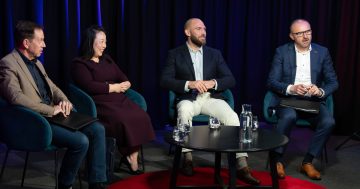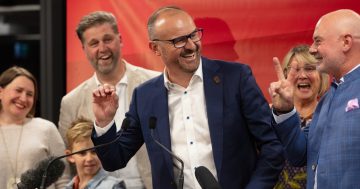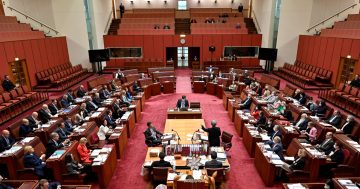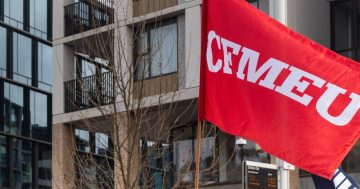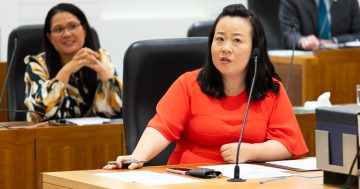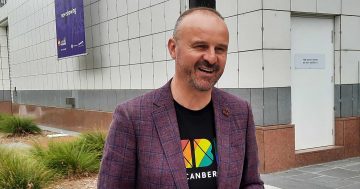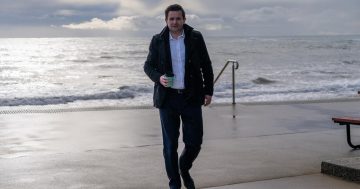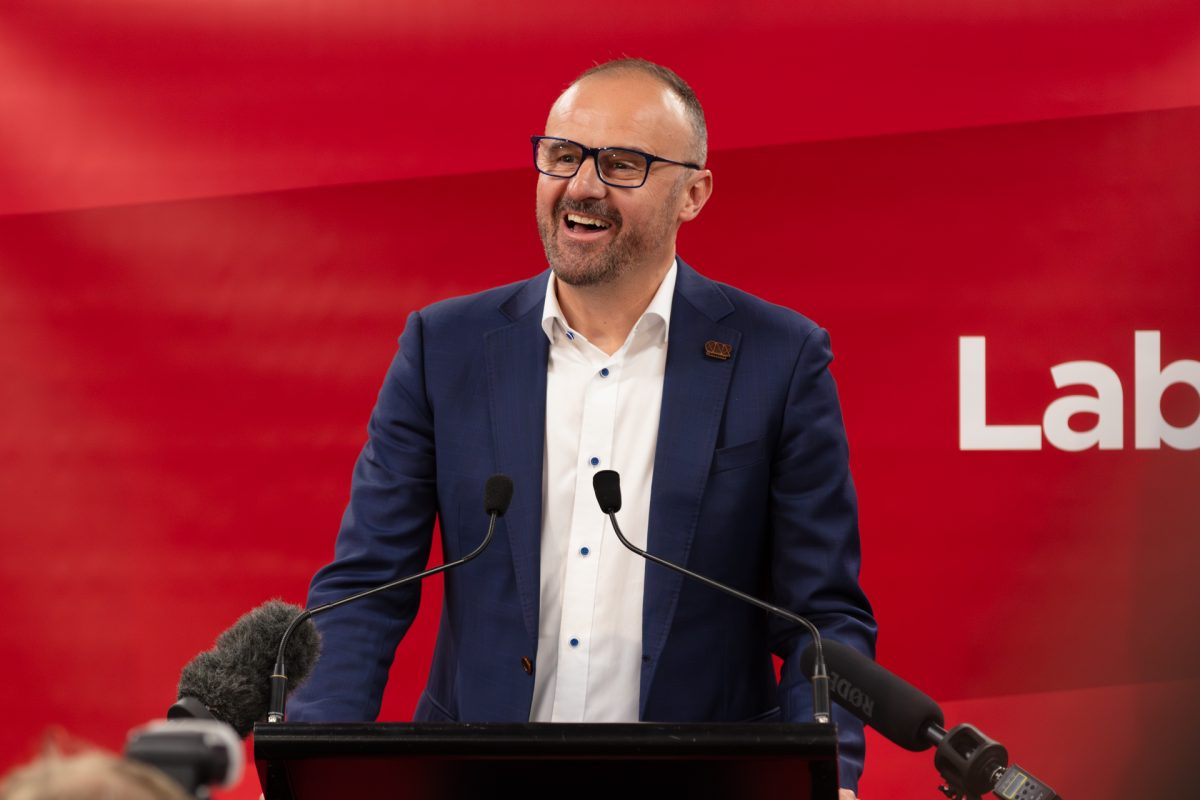
Exulting in victory on Saturday night, but Chief Minister Andrew Barr has some negotiating to do in the coming days. Photo: Thomas Lucraft.
It would be easy – and lazy – to assume that a Labor/Greens government is now rusted on in the ACT.
This is a victory for Andrew Barr to savour – he called it a flawless campaign – but he is savvy enough to know that 8.5 per cent of the electorate went looking for somewhere else to park their votes. That’s a sizeable bloc that wasn’t satisfied with the job all the parties were doing.
This time, they opted for independents, but in 2028, if Labor fails to deliver, that discontent could be channelled into the blue column.
That is why Mr Barr specifically mentioned the independents in his victory speech.
Labor’s vote so far is down only -3.3 per cent on 2020, not a huge kick in the pants but enough of a message to think about.
If the Greens hang on to three seats, Labor could govern in coalition as a majority ramming through legislation and riding roughshod over the independents and Liberals, but that would not be in the spirit of this election, as well as being self-defeating.
How Labor works with the crossbench could determine what happens in four years’ time, as well as being an opportunity to improve government, source fresh ideas and bring more integrity to the Legislative Assembly.
Mr Barr will need a guarantee of supply but it will be interesting to see how arrangements with the Greens, including portfolios, and Independents pan out.
And if the Greens are reduced to just two, Mr Barr will need his best negotiating skills.
New faces across the political spectrum will replenish the stocks in the Legislative Assembly, and their contributions will be keenly anticipated, particularly those of Independents for Canberra’s Thomas Emerson and independent Fiona Carrick.
Opposition Leader Elizabeth Lee spun the election as a vote for change, but that change didn’t include her.
One quip about a sign during the campaign summed up the Liberals predicament: “23 years is long enough; yeah, 23 years to get their act together.”
The Liberals developed a broad platform with big promises but still left themselves exposed on tax and spending, much as Alistair Coe did in 2020.
A town full of public servants is not going to buy a pitch that includes lower rates and taxes while still spending a motza.
Nobody likes to pay rates and taxes, but most appreciate the infrastructure and services they provide.
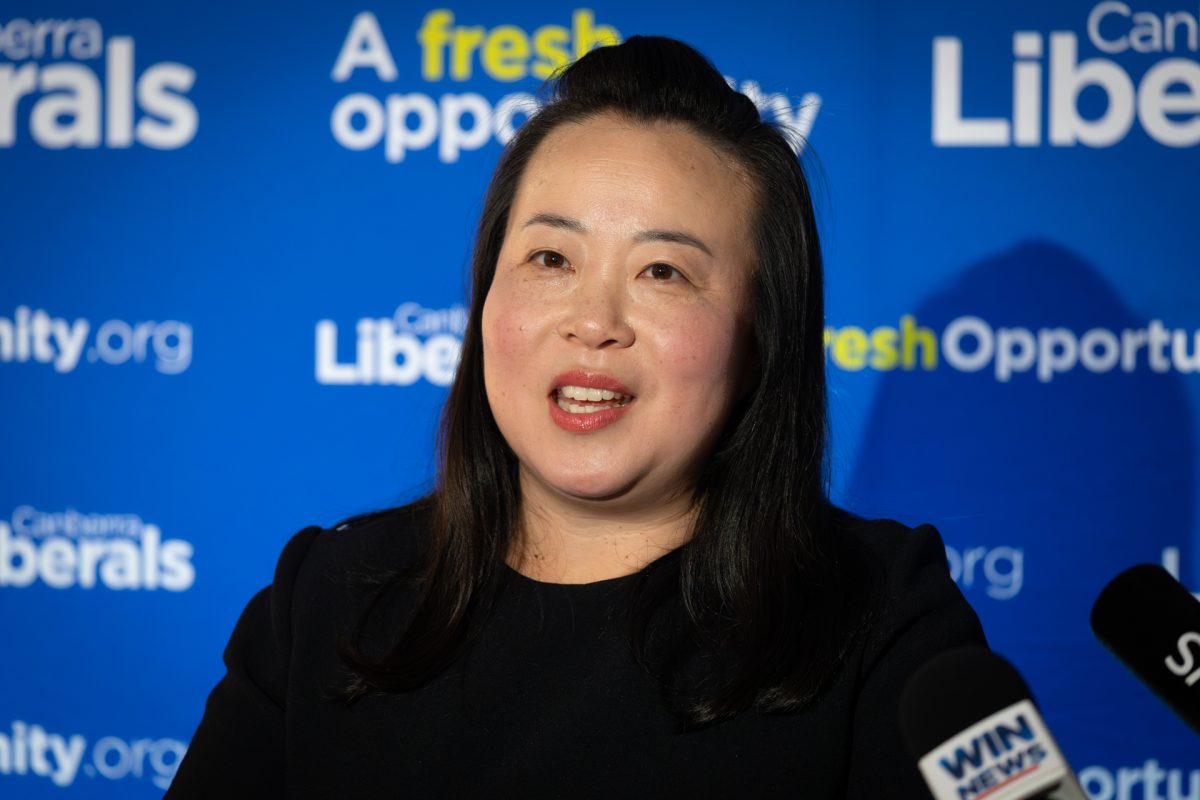
Elizabeth Lee’s future as Canberra Liberals Leader is up in the air. Photo: Michelle Kroll.
The Liberals tried to cover the resultant revenue gap, indeed exceed it, with a proposed fire sale of the territory’s most important asset, land, which, if it could have been delivered, would have given buyers a one-off windfall – and a boost to economic activity from their “can-do” approach, and the city stadium and convention centre.
Which all seemed a bit risky and hard to believe.
The strategy made attacks on Mr Barr’s economic management sound hollow. A more modest program and a viable pathway to budget repair could have added an edge to those arguments.
Ms Lee asserted the ACT didn’t have a revenue problem, it had a waste problem but could not or would not identify where that was, apart from citing the big IT procurement loss and Integrity Commission expenses, or where she would cut spending.
Leaving it until the Treasury deadline of 11 October to submit most of their policies for costing also cast doubt over them. Not that they were alone in tardy submissions.
One correspondent told me that with fixed terms, the parties have four years to get their costings sorted, yet voters still are expected to make up their minds with insufficient detail.
That lack of detail also harmed the Liberals, with some ministers unable or unwilling to elaborate when quizzed by journalists.
The contradictory message of the Liberals also didn’t help them, depicting Canberra as a disaster zone while also talking it up. Mr Barr says the experience of the many newcomers to the national capital in recent years is overwhelmingly positive, especially compared to where they have come from.
Mr Barr was able to portray Labor as the party of experience, practicality and the sensible centre.
Former Liberal chief minister Kate Carnell was blunt on election night, saying the party had to rid itself of its right-wing rump and embrace the Canberra community for what it is if it really wanted to govern again.
The moderate leadership of Ms Lee was not enough when there was still a Darren Roberts in her team with an all too accessible social media history for Labor to exploit.
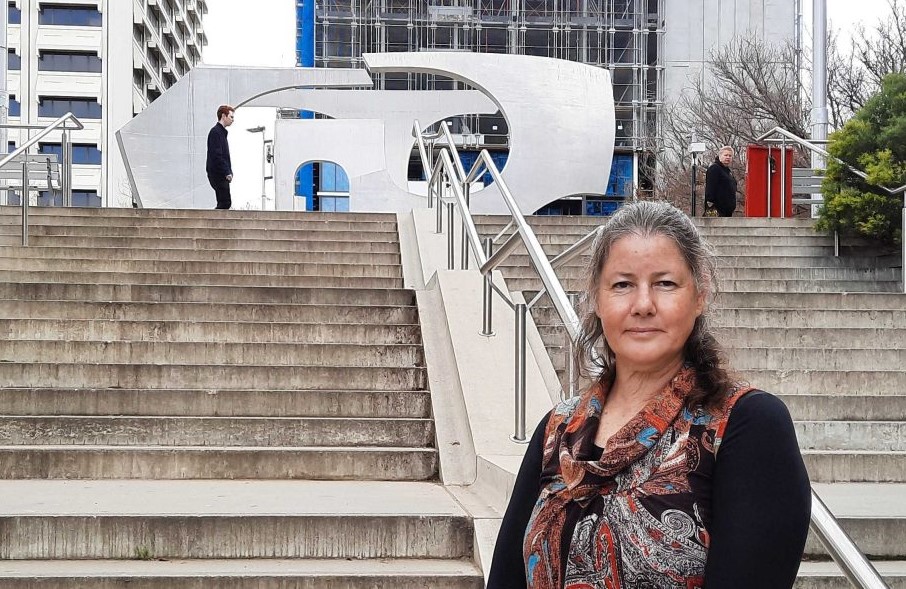
Independent Fiona Carrick just wants good community outcomes. Photo: Ian Bushnell
Winning independent Fiona Carrick offered one of the best quotes of the night when asked about ideological leanings: “I’m not really into ideology anymore. I just want good community outcomes, and that’s what I will be looking for.”
A lot of voters would heartily agree with her, and it is something the Liberals could take on board without abandoning all its party philosophy.
Should the Liberals reassess Ms Lee’s leadership? It’s hard to see who else they have, but plainly, she did not hold up well under pressure in the last few days of the campaign, and that would not have helped the cause. The make-up of the party room will determine where the numbers lie.
In the end, the Liberal vote did not increase outside of the southern stronghold of Brindabella, which could give them three seats. As soon as that became apparent, their quest was doomed.
Hare-Clark can be cruel – witness the Greens representation being halved for only a -1 per cent slip – but blaming it for the Liberal loss only covers up the reasons why they could not find more votes elsewhere in Canberra.
The Greens will still need to do some soul-searching because their influence will be diminished. They also overpromised and became detached from reality so they will need to temper their ambition.
Finally, this should be the last light rail election. The Liberals went down that rabbit hole again but probably only found those who were already opposed.
Four is surely enough, although Mr Barr suspects that in 2028, it will still be an issue. But the electorate has spoken. It will take a long time but Canberra will be the better for a multi-modal electrified public transport system.
Original Article published by Ian Bushnell on Riotact.




